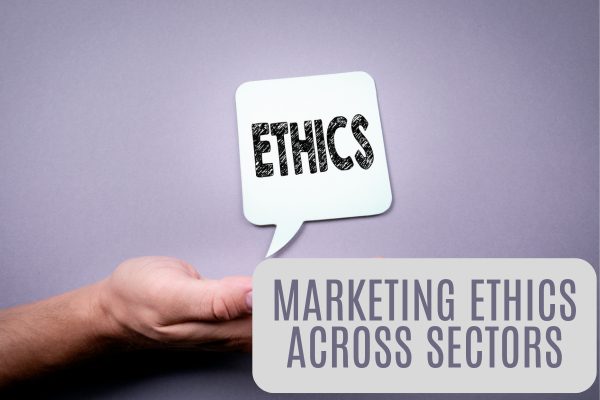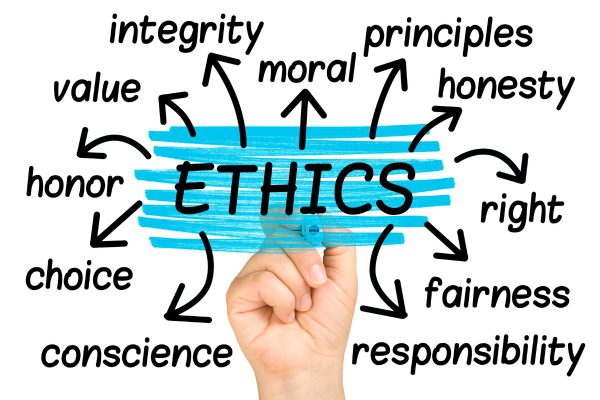

Picture a brand showcasing its eco-packaging while its factories pollute the environment. Or a care facility advertising compassion and safety—while quietly struggling with staffing failures. These aren’t isolated problems. They’re symptoms of a wider issue: marketing used to cover up institutional shortcomings.
Greenwashing is commonly tied to environmental claims, but the same deceptive strategies exist in other industries too. From global corporations to senior care centers, marketing often replaces accountability.

Institutions want to look good. That’s natural. But when the desire to appear ethical outweighs the effort to actually be ethical, the result is misleading at best—and harmful at worst.
Across sectors, we see promises of transparency and care that don’t match internal practices. In care settings, especially those serving vulnerable groups like the elderly, this disconnect can have serious consequences. In some cases, staff-related negligence has led families to seek legal help when care standards are dangerously ignored.
Despite growing awareness, greenwashing and similar tactics remain effective. Why? Because most people don’t have time to dig deeper. They rely on surface-level impressions—what looks clean, what sounds ethical, what feels trustworthy.
Marketers know this. A well-crafted phrase like “eco-conscious practices” or “people-first care” can create instant comfort, even if there’s no substance behind it. Without transparency requirements or consequences for exaggeration, there’s little to stop institutions from continuing the cycle.
The impact is even more troubling when the audience includes vulnerable individuals or their families. In elder care, for example, family members often make decisions quickly, relying on brochures, websites, or facility tours. These materials are designed to reassure, not reveal.
When phrases like “family-style environment” or “personalized care” are used without backup, they can mask serious issues. And when something goes wrong, the people affected are often those least equipped to speak up.
Marketing plays a dual role in shaping public safety outcomes. On the positive side, marketing campaigns have successfully promoted crucial safety behaviors, from seatbelt usage to anti-smoking initiatives. Companies often highlight safety features as key selling points, driving innovation in automotive safety systems, childproof packaging, and protective equipment. This competitive advantage motivates businesses to invest in safer products.
However, marketing can also undermine safety when profit motives overshadow consumer welfare. Historical examples include tobacco companies downplaying health risks and pharmaceutical firms minimizing side effects. Aggressive marketing of alcohol, extreme sports, or risky financial products can normalize dangerous behaviors, particularly among vulnerable populations like teenagers.
The tension between persuasion and protection requires careful regulation. Truth-in-advertising laws, mandatory warning labels, and restrictions on marketing to children represent attempts to balance commercial freedom with public safety. Social media has intensified these challenges, as influencer marketing and viral content can rapidly spread both safety awareness and dangerous trends.
Ultimately, responsible marketing that prioritizes long-term consumer wellbeing over short-term profits can be a powerful force for safety. The key lies in aligning business incentives with public health goals through appropriate regulation, industry self-governance, and consumer awareness.
The strategies used to greenwash are often the same ones used to gloss over failures in other institutions. Carefully selected language, feel-good visuals, and emotionally charged statements distract from the reality.
A product might be labeled “clean” without meeting any health standards. A care facility might highlight its cozy environment while skimming over its lack of qualified staff. The goal in both cases is not to inform—it’s to reassure.
Feel-good messaging is powerful. But when it replaces honesty, it becomes dangerous. Empty promises can prevent progress by creating the illusion that problems have already been solved.
Institutions that neglect emergency planning steps often fail in broader areas of public responsibility. When oversight is weak, and messaging is strong, people may not realize there’s a problem until it’s too late.
Misleading marketing campaigns across sectors face increasingly severe legal and ethical repercussions, particularly in environmental claims and care facility advertising. Companies guilty of “greenwashing” – falsely promoting products as eco-friendly – face substantial fines, lawsuits, and regulatory sanctions. Volkswagen’s emissions scandal resulted in over $30 billion in penalties, while numerous brands have faced FTC actions for unsubstantiated environmental claims.
Care facilities engaging in deceptive marketing face even graver consequences. When nursing homes or assisted living centers misrepresent staffing levels, medical capabilities, or living conditions, they risk wrongful death lawsuits, license revocation, and criminal charges for elder abuse. False promises about memory care services or rehabilitation programs can devastate vulnerable families both emotionally and financially.
The ethical damage extends beyond legal penalties. Companies lose consumer trust, face boycotts, and suffer lasting reputational harm. Employees experience moral distress, leading to turnover and whistleblowing. In care settings, misleading marketing directly endangers residents’ wellbeing and dignity.
Regulatory bodies are strengthening enforcement through stricter substantiation requirements for environmental claims and mandatory transparency in care facility advertising. The convergence of social media activism, class-action lawsuits, and aggressive regulatory oversight creates a high-stakes environment where misleading campaigns can destroy decades of brand equity overnight.
History offers plenty of examples of what happens when institutions push the limits of messaging. From “natural” cigarette campaigns to oil companies promoting green energy while expanding drilling, the gap between brand and behavior has triggered public backlash.
In care settings, similar patterns can emerge. A highly rated facility might receive awards or community praise, only to later face investigations for safety violations. These moments reveal the dangers of relying solely on image.
As consumers, families, and citizens, we have a role to play. We can question vague claims. We can challenge overly polished messaging. And we can support businesses and institutions that value transparency over perfection.
This isn’t just about avoiding greenwashing. It’s about recognizing when marketing is being used to avoid responsibility—whether that’s in the packaging of a product or the brochure of a care facility.

Don't let aphids, slugs, and caterpillars ruin another plant. Take back control with simple, natural methods that actually work.